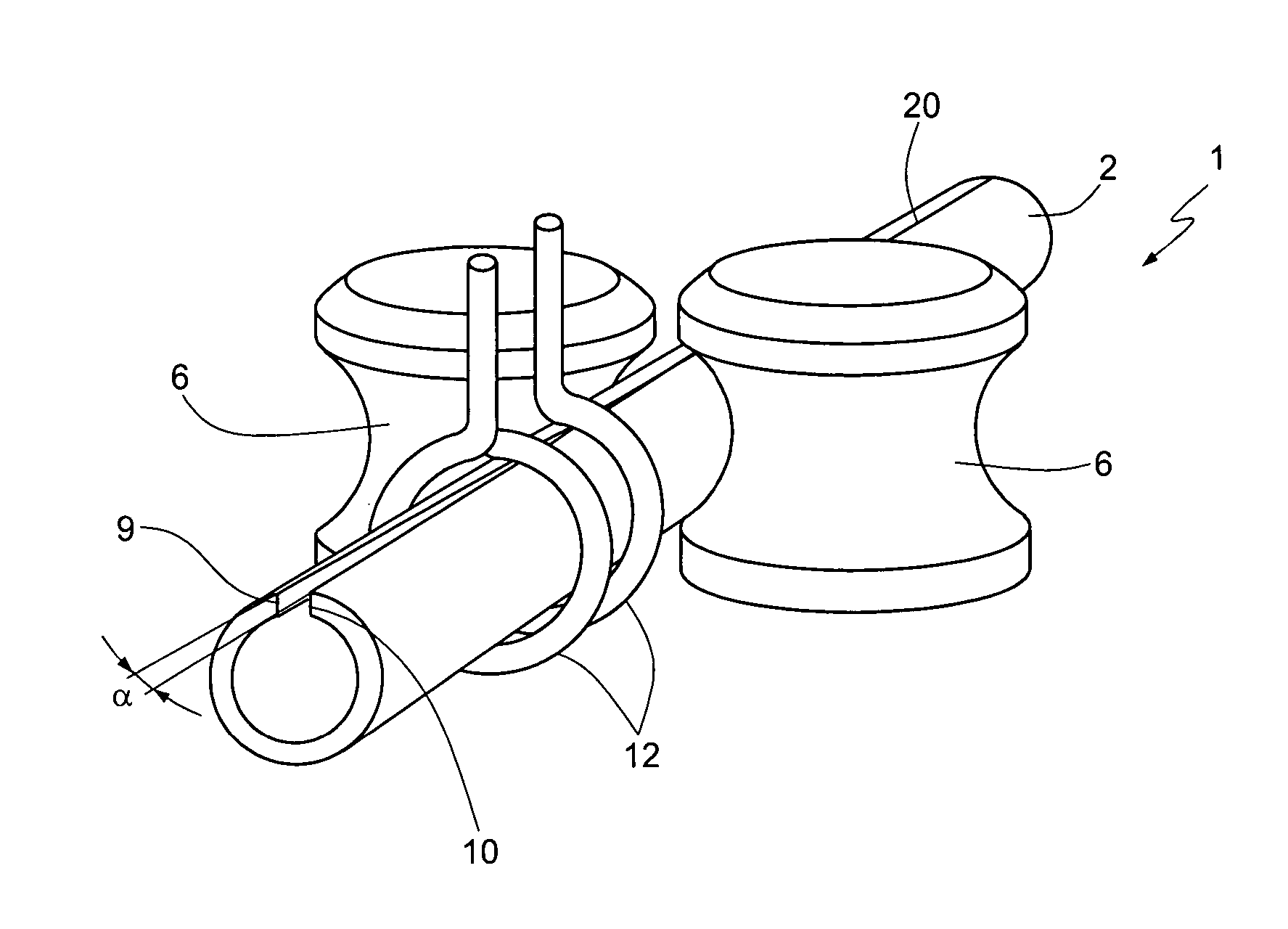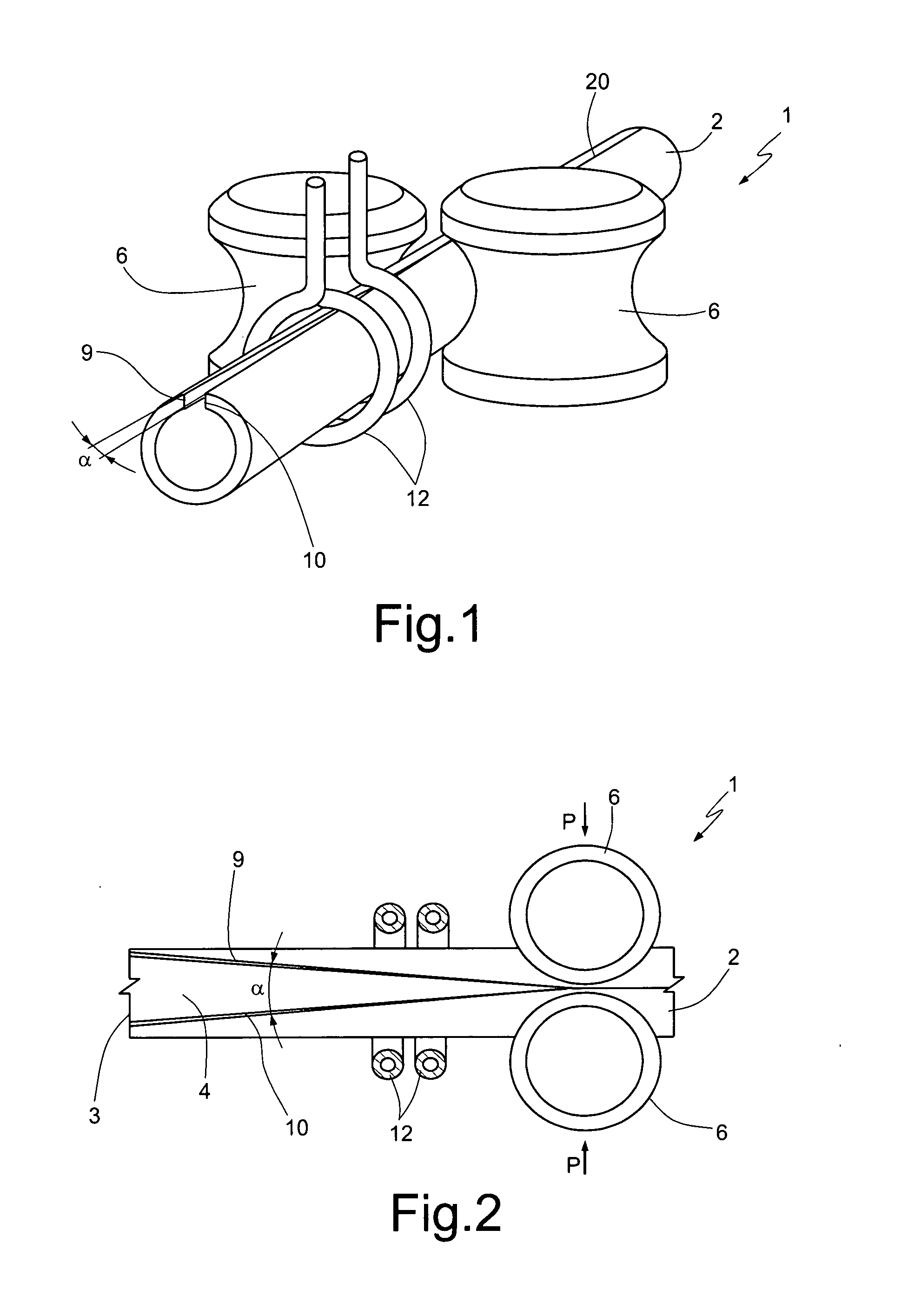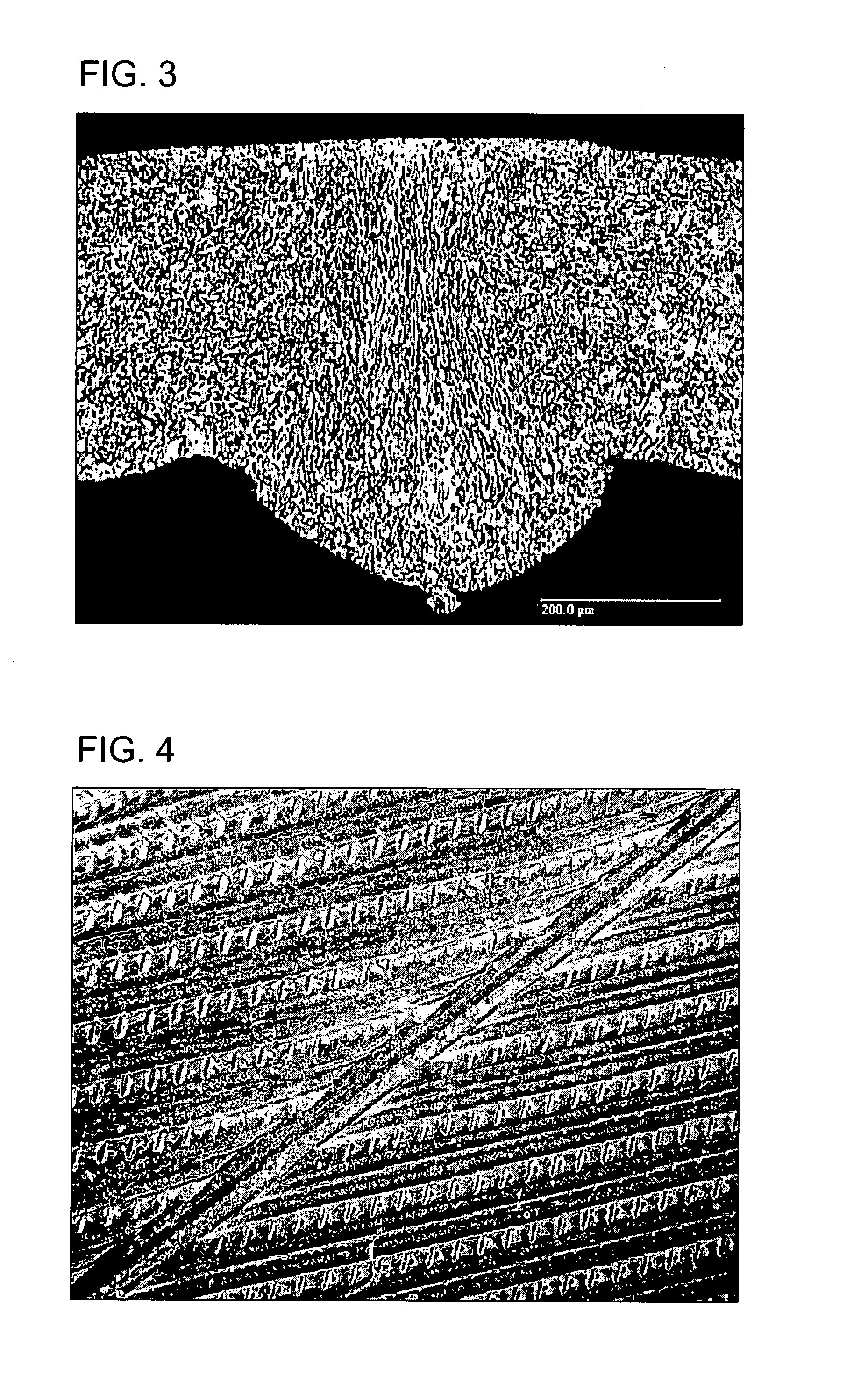Method for the production of tubes for heat exchangers from precipitation-hardened alloys by high-frequency induction welding
a technology of precipitation hardening alloys and heat exchangers, which is applied in the direction of high-frequency current welding apparatus, furnace types, furnaces, etc., can solve the problems of inability to meet the requirements of high-frequency current welding. achieve the effect of simple and inexpensive implementation and good mechanical characteristics
- Summary
- Abstract
- Description
- Claims
- Application Information
AI Technical Summary
Benefits of technology
Problems solved by technology
Method used
Image
Examples
Embodiment Construction
[0031] A method for producing a tube for heat exchangers according to an embodiment of the present invention envisages first of all producing an ingot with rectangular cross section (plate) starting from an alloy that can undergo precipitation hardening and, in an embodiment thereof, starting from an alloy chosen within the Cu—Fe—P and Cu—Fe—Ni—P systems.
[0032] Table 1 gives the data regarding the weight-percentage composition of the Cu—Fe—P and Cu—Fe—Ni—P alloys used for the high-frequency induction welding test of a tube in an embodiment of the present invention.
TABLE 1Weight-percentage composition of the alloys used for high-frequency induction welding of an ACR tubeAlloyFe wt %P wt %Ni wt %Cu wt %Cu—Fe—P**0.1010.0348—RemainderCu—Fe—P—Ni**0.05600.03620.0613Remainder
[0033] Table 2 gives, instead, some of the mechanical and electrical characteristics of the alloys used for the production of welded tubes for heat exchangers according to the invention, as compared to the same char...
PUM
| Property | Measurement | Unit |
|---|---|---|
| Temperature | aaaaa | aaaaa |
| Temperature | aaaaa | aaaaa |
| Weight | aaaaa | aaaaa |
Abstract
Description
Claims
Application Information
 Login to View More
Login to View More - R&D
- Intellectual Property
- Life Sciences
- Materials
- Tech Scout
- Unparalleled Data Quality
- Higher Quality Content
- 60% Fewer Hallucinations
Browse by: Latest US Patents, China's latest patents, Technical Efficacy Thesaurus, Application Domain, Technology Topic, Popular Technical Reports.
© 2025 PatSnap. All rights reserved.Legal|Privacy policy|Modern Slavery Act Transparency Statement|Sitemap|About US| Contact US: help@patsnap.com



